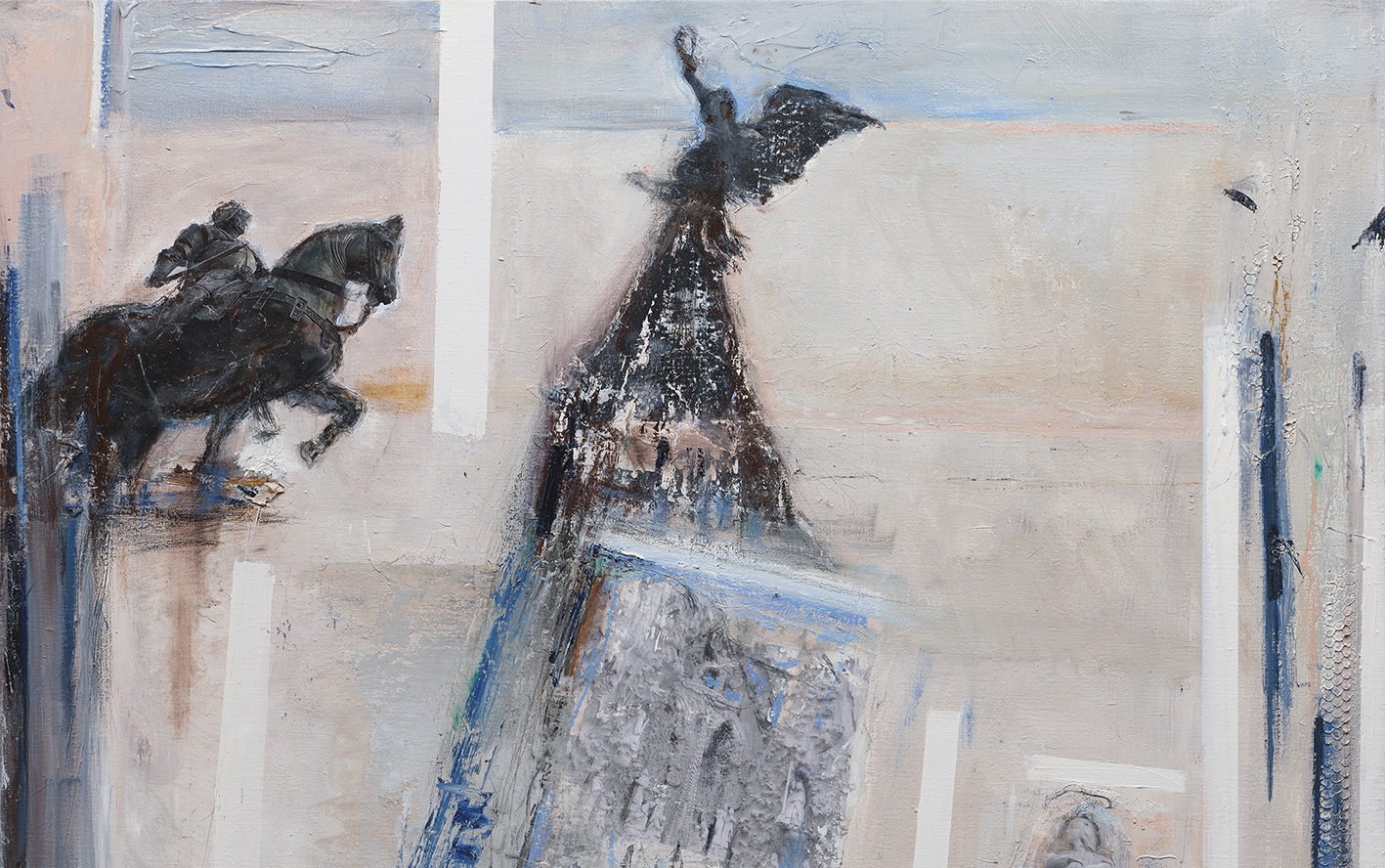Mari Roosvalt’s oil paintings and watercolors of the 2010s, which contained collage and were built on the principle of collage, carried the idea of deep layers of culture in Europe extending into modern life and of nature in the urban environment. These topics have remained close to her heart. However, the start of the war in Ukraine in 2022 prompted the use of different images than before. In the painting “Waiting” (oil, canvas, mixed media), the artist combined the well-known equestrian monument of condottiere Bartolommeo Colleoni, a mercenary leader in the service of Venice in the 15th century, modeled by Andrea Verrocchio, as a symbol of an invading military force, and as a counterbalance to it, the Russalka monument created by Amandus Adamson with an angel holding a wreath of peace instead of a cross. This painting was a first in a series of works with similar motifs. The urge to express her social stance reminded the artist of the 1990s, when, on the one hand, under the influence of major social changes and, on the other hand, trying to update and enrich her painting language, she began to use collage in a series of small-format works and installations (“Messages”, 1998 ; “Person”, 1998-99; “Roleplays”, 2000). The juxtaposition of the latest works and those created decades ago induces ideas regarding the differences in the expression of the artist’s social opinions and the applications of the collage principle in turbulent times, both in Mari Roosvalt’s work and in a more general sense.
Mai Levin
Mari Roosvalt has graduated from the department of painting at Estonian State Art Insitute in 1969 and she has worked as an art teacher in Tallinn Secondary School No. 7, Tallinn Secondary School No. 46, Tallinn Art School and Tallinn Pedagogical University. Since 1992, Mari Roosvalt has been working in various positions at Tallinn Academy of Arts. Since 1970, the artist has been actively participating in exhibitions. Roosvalt has been recognized with several reputable art awards, including the Konrad Mägi Award. While in 1980 she mainly practised abstract painting and moved towards abstract expressionism in 1990s, at her current exhibition Mari Roosvalt has followed her author’s technique that she acquired in late 1990s when she started adding photographic means into her artwork.
Exhibitions in Draakon gallery are supported by the Cultural Endowment of Estonia, Estonian Ministry of Culture and Liviko AS.




